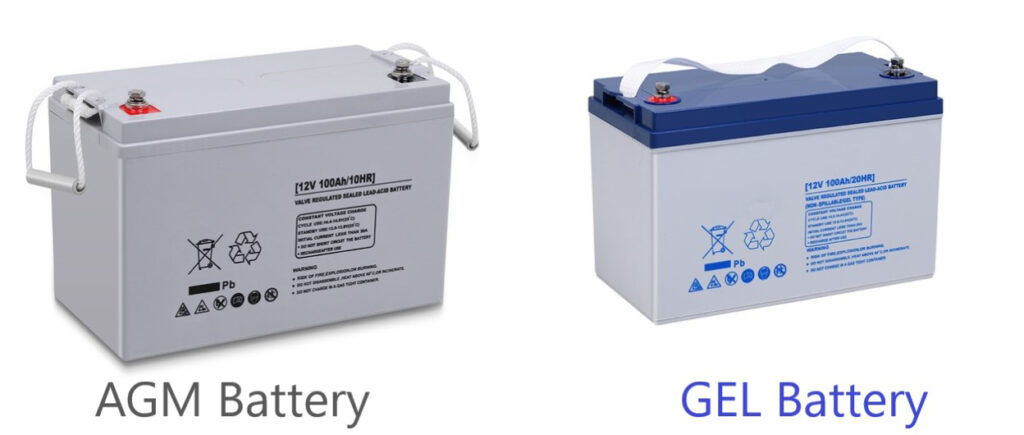The most fundamental difference between AGM (Absorbed Glass Mat) and Gel batteries lies in the electrolyte medium and the way it is immobilized within the battery.
- AGM Batteries: In AGM batteries, the electrolyte is absorbed into a fiberglass mat that is sandwiched between the lead plates. This design allows the electrolyte to be immobilized, preventing it from spilling or leaking even if the battery is damaged. AGM batteries are known for their high power density, fast recharge rates, and resistance to vibration. They are commonly used in applications such as starting batteries for cars, motorcycles, and boats, as well as in deep-cycle applications like solar power systems and electric wheelchairs.
- Gel Batteries: In Gel batteries, the electrolyte is mixed with a silica gel that forms a thick, jelly-like substance. This gel electrolyte is immobilized within the battery, preventing it from spilling or leaking. Gel batteries are known for their deep-cycle capabilities, high resistance to temperature fluctuations, and long service life. They are commonly used in applications such as renewable energy storage, backup power systems, and electric vehicles.
In summary, the main difference between AGM and Gel batteries lies in the electrolyte medium and the way it is immobilized within the battery. AGM batteries use a fiberglass mat to absorb the electrolyte, while Gel batteries use a silica gel to form a thick, jelly-like substance.


